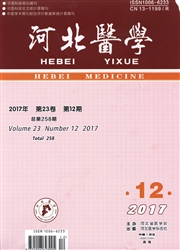

 中文摘要:
中文摘要:
血液恶性疾病是严重危害人类生命健康的重大疾病,异基因造血干细胞移植(allogeneic hemopoietic stem cell transplantation,Allo.HSCT)是绝大多数血液恶性疾病患者的有效乃至唯一的根治手段,Allo—HSCT的基础是异体植入及随后的移植物抗白血病(graft versus leukemia,GVL)效应,但Al—lo—HSCT同时发生移植物抗宿主病(graft versus host disease,GVHD),导致GVHD相关死亡。因此,如何实现GVHD和GVL的部分或完全分离,即免疫耐受,是Allo—HSCT的核心问题之一,
 英文摘要:
英文摘要:
SUMMARY Allo-HSCT is a potentially curative therapy for many hematological malignancies, the basis of which is graft-versus-leukemia (GVL) effect. However, acute graft-versus-host disease (GVHD) is responsible for 15% to 40% of mortality and is the major cause of morbidity after transplantation. Therefore, separation of GVHD and GVL partially or completely could improve the transplant outcomes. This study focuses on the effects of G-CSF on T cells in peripheral blood stem cell grafts and bone marrow grafts and its mechanisms after in vivo G-CSF application. The separation of GVHD and GVL effect and the mechanisms of which after in vivo G-CSF and interleukin-11 ( IL-11 ) treatment of healthy donors were investigated. The main contributions of this research are listed as follows : ( 1 ) Immune tolerance of T cells was induced simultaneously in peripheral blood stem cell grafts and bone marrow grafts after in vivo G-CSF application; (2) T cell hyporesponsiveness and polarization of T cells from Thl to Th2 were maintained after mixture of G-CSF-mobilized peripheral blood grafts (G-PB) and G-CSF-primed bone marrow grafts (G-BM) according to different proportions in vitro; (3) Treating donor with G-CSF and IL-11 decreased GVHD and retained GVL effect; (4) The incidence of acute GVHD was decreased after Allo- HSCT using G-PB and G-BM as allografts; (5) In combination with other techniques, the HLA barriers were overcomed using G-PB and G-BM as allografts; (6) The incidences of acute GVHD were significantly decreased and the GVL effects were retained or enhanced in relapsed patients after treatment by G- CSF-mobilized peripheral blood graft infusion compared with those received steady-state peripheral blood lymphocyte infusion, indicating that GVHD and GVL could be partially separated in clinical settings. Based on our results, we would conclude that the issues on the deficiency of donors are resolved, and novel strategies offered for the prophylaxis and treatment of patients
 同期刊论文项目
同期刊论文项目
 同项目期刊论文
同项目期刊论文
 期刊信息
期刊信息
